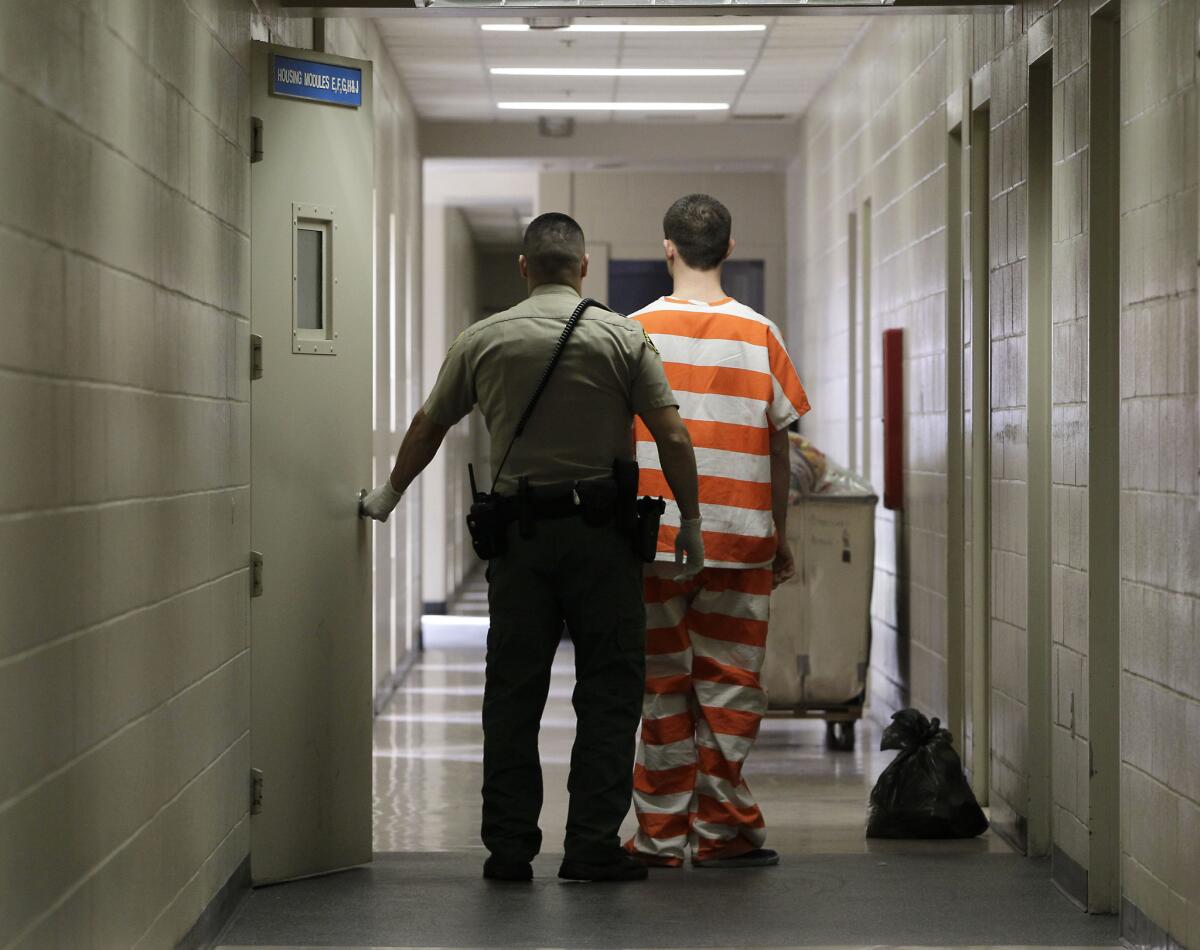Editorial: California’s Prop. 47 revolution: What happens when the inmates come home?

An inmate at the Madera County Jail is taken to a housing unit in February of 2013.
- Share via
As 6,000 drug offenders are released from federal prisons months or even years earlier than they had expected due to Obama administration criminal justice reforms, and as thousands more leave California prisons after having their felony sentences reclassified as misdemeanors under Proposition 47, the surge in inmate releases may focus the public’s attention on the wrong problem.
Prisoners come home every day. About 9,000 California inmates completed their sentences and returned home each month during the worst of the state’s prison crowding crisis. Their prospects for staying on the straight-and-narrow were not great because in-prison treatment and rehabilitation programs were too few to meet the need, and because the prisons were (according to federal judges) “criminogenic” — meaning the environment made it more likely that inmates who returned to their neighborhoods would return to crime. Yet as large numbers left prison, crime rates kept falling. Offenders were reabsorbed into society in fairly large numbers without touching off crime waves.
Over-incarceration was a mistake that can be corrected.
Those releases, however, have been accompanied by increases in the number of people living in misery on the streets who suffer from mental illness and drug addiction. It doesn’t take a leap of imagination to see the connection. The problem of draconian punishments for nonviolent acts such as drug possession is being addressed in large part by the resentencing and release of prisoners. But prisoners coming home without drug or mental health treatment, without jobs, without housing and without reentry counseling and support — this is a different problem and is a long way from resolution. When inmates were being released at a steady pace of 9,000 or 10,000 a month, society’s failure to offer assistance could be conveniently ignored. That will be harder to do as sentences are shortened and the number of prisoners coming home becomes larger.
In California, Proposition 47 may help by directing the savings realized from the lower prison population to rehabilitation programs, along with education and victim services. But no such funds will be available until late next year. Counties already are saving money from prosecuting fewer felony cases, now that drug possession and some theft crimes are misdemeanors, and can choose to apply those savings to reentry services. But most have a long way to go before they have developed a contracting and monitoring infrastructure that can produce the right services in the right measure. They have to step up the pace. Over-incarceration was a mistake that can be corrected. But it will take time, and it will not come cheap.
Follow the Opinion section on Twitter @latimesopinion and Facebook
More to Read
A cure for the common opinion
Get thought-provoking perspectives with our weekly newsletter.
You may occasionally receive promotional content from the Los Angeles Times.






